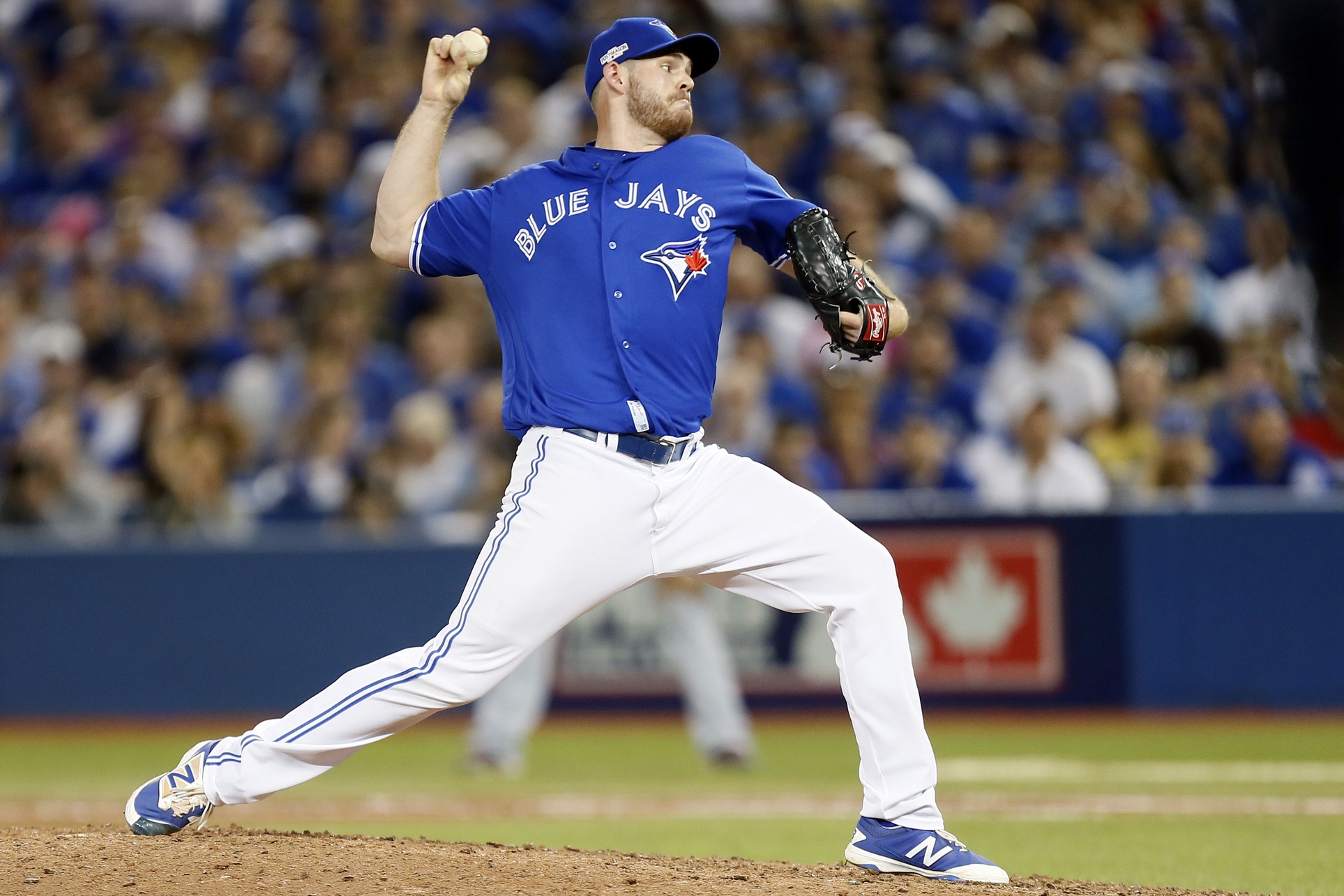Toronto made numerous deals prior to and during the 2016 season that had a large impact on the Blue Jays making a return trip to the American League Championship Series. These deals ranged from re-signing Marco Estrada and signing J.A. Happ to trading for Jason Grilli and Joaquin Benoit. Then there’s Joe Biagini. On December 10th 2015, without much fan fare, the Blue Jays used the Rule 5 draft to select a man who would become one of the most important pieces in their postseason run.
These days, the Rule 5 draft is often a forgotten opportunity to improve a team, and for good reason. With changes to the rules in the last decade allowing for an extra year of minor league control, the players that are most often available just aren’t good enough to justify a roster spot, and most do not remain with the team for the entire season. They become an afterthought and are easily forgotten. However, this was far from the case with the former San Francisco Giants AA minor league starter from the Richmond Flying Squirrels.
By the end of the season, Joe Biagini would end up being John Gibbons’ most reliable reliever in 2016, save for Roberto Osuna. He threw 67.6 innings with a 3.06 ERA, and do it all with 8.2 K/9 and 2.5 BB/9. His ability to pitch early in a game, to pitch late in a game, to record multiple innings, and to effectively come in with runners on, allowed him to become a trusted option for John Gibbons.
It didn’t start that way, however. Biagini was initially an extreme long shot to make the opening day roster. With Osuna, Storen, Floyd, Chavez, Cecil, and Loup, there was supposed to only be one spot available for a battle, and the smart money was on Arnold Leon. Biagini probably needed a great spring to win that job, but his 4.00 ERA in nine innings probably wasn’t going to be enough. However, luck smiled on the quirky Biagini (and frowned on a couple of others), as Loup and Marco Estrada went down with injuries that would force them to the disabled list. This opened up two more spots, and Biagini made the club (along with Leon and Ryan Tepera).
Once the season began, Biagini was very much the seventh man in the pen (poor Tepera). In key spots, the Blue Jays would turn to Arnold Leon before their rule 5 reliever. Biagini didn’t even make his debut until the home opener, which was the fifth game of the year. However, he didn’t waste his chance. Forced into action in a one-run game in the ninth inning (trailing), the rookie’s first big league task was Xander Bogaerts, David Ortiz, and Hanley Ramirez. Talk about your rude welcomes.
But Biagini was up to the task. He got all three hitters, and even struck out David Ortiz for his first big league punch out. That seemed to earn Biagini his manager’s trust, and he was sent right back out there the next day. Once again he got through his inning without allowing a run, and it seemed like perhaps the Jays had found something.
Gibbons began using him more and more (from five times in April to 12 times in May), and in higher leverage spots. The tall righty rewarded his manager’s faith, postin a 0.86 ERA through the first two months of the season. However, as the calendar turned to June, Biagini began to struggle. Batters hit .400/.455/.525 for the month and Biagini allowed ten runs (seven earned) in just 7 1/3 innings. It seemed like the league had figured him out. But then a funny thing happened: Biagini made an adjustment.
Back in August, Joshua Howsam wrote an excellent article detailing how Biagini’s repertoire could play out well as a rotation option. In that piece, Howsam outlined how Biagini expanded his pitch variety as the season continued, and provided different looks to the opposing lineups.
This showed up in the numbers. After the disastrous June, Biagini rebounded heavily in July and August with his new repertoire, and posted ERAs of 1.46 and 1.76, respectively. He hit a bit of a wall in September, allowing his first three home runs of the season, but when he received some rest heading into the postseason, he showed that he was still just as dominant, allowing just three hits and no runs across 7 1/3 postseason innings.
The question now becomes “where does Biagini fit moving forward?” With his repertoire and history as a starter, he could potentially provide the Blue Jays with rotation insurance or as a multi-inning bridge reliever (as outlined in that link above), but there are others that would like to keep him in the late-inning role in which he has excelled.
Biagini has performed very well in high leverage situations, where opponents hit just .203 against him. Those numbers get even better with runners in scoring position, as hitters batted just .205. Combine that with the fact he stranded 80.8 percent of inherited runners, and generates a ton of groundballs (52.2 percent) and that makes him an effective arm in the late innings of a ball game.
No matter whether the Blue Jays choose starting or relief, that is a decision that will unfold in spring training.
For now, we can reflect on the fact that we got to watch the development of a key piece before our eyes, and that is a rare treat.
Lead Photo: John E. Sokolowski-USA TODAY Sports
